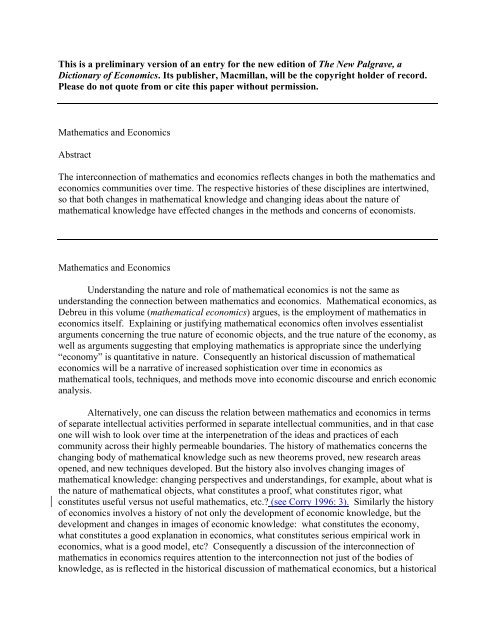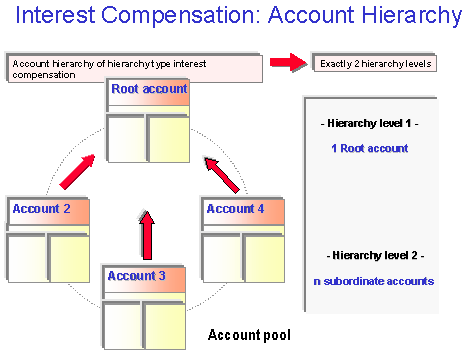
Having these types of liquid assets or cash on hand balances out the risk-weighted assets that banks hold. Basel I required international banks to maintain a minimum amount (8%) of capital based on a percent of risk-weighted assets. Basel I also classified a bank’s assets into five risk categories (0%, 10%, 20%, 50%, and 100%) based on the nature of the debtor (e.g., government debt, development bank debt, private-sector debt, and more). If the markets collapsed (which they did), the banks would have to cover losses with higher-quality debt such as shareholder’s equity, retained capital, or supplementary capital, draining their accounts. The Accords set the capital adequacy ratio (CAR) to define these holdings for banks.
This would have been any instrument a bank issued as a loan without requiring collateral, which was lower in priority than other debts. Number of operations that have identified Gender-Based Violence (GBV) as an issue in the design phase and have responded with mitigating actions throughout the operation. Lastly, the proposal requires both sets of firms (large bank holding companies and regional firms) subject to the LCR requirements to submit remediation plans to U.S. regulators to address what actions would be taken if the LCR falls below 100% for three or more consecutive days. This ensures that the funds are sufficiently liquid and are available when the bank needs to use them. Tier 3 capital debt used to include a greater number of subordinated issues when compared with tier 2 capital.

This higher minimum reflects the PRA’s differing treatment of the leverage ratio, which excludes central bank reserves in ‘Total exposure’ of the calculation. Banking regulations known as the Basel Accords require banks to have different types of capital on hand. These liquid and cash assets balance out the risk-weighted assets that banks hold.
Many banks held tier 3 capital to cover their market, commodities, and foreign currency risks derived from trading activities. What this really means is that banks used loans from other banks to cover any losses they took while trading on several markets. Basel I required international banks to maintain a minimum amount (8%) of capital, based on a percent of risk-weighted assets.
Number of countries supported by IDA to take IFF-related actions
Tier 2 capital cannot exceed Tier 1 capital, which means that effectively at least 50% of a bank’s capital base should consist of Tier 1 capital.Tier 1 capital is the most stable and reliable source of funding for a bank’s operations. Ratio of disbursements during the fiscal year to the undisbursed balance at the beginning of the fiscal year for IDA investment project financing projects. There is instead a corporate standard based on historical experience. Share of IDA investment project financing operations for which at least one citizen engagement indicator is included in the results framework of the PAD. Percentage of Country Partnership Framework (CPF) Completion Reports rated moderately satisfactory, satisfactory or highly satisfactory by Independent Evaluation Group (IEG). Data is reported for CPFs of IDA eligible countries, including blend countries, during CPF period”.
Wabtec strike passes 30-day mark as workers push for greener … – Pennsylvania Capital-Star
Wabtec strike passes 30-day mark as workers push for greener ….
Posted: Tue, 25 Jul 2023 07:00:00 GMT [source]
Tier 2 capital includes revaluation reserves, hybrid capital instruments, and subordinated debt. In addition, tier 2 capital incorporates general loan-loss reserves and undisclosed reserves. Tier 3 capital includes a greater variety of debt than tier 1 and tier 2 capital but is of a much lower quality than either of the two. Under the Basel III accords, tier 3 capital is being completely abolished. Capital tiers for large financial institutions originated with the Basel Accords.
Who are Venture Capitalists?
The full list is published annually in the Joint Report on Multilateral Development Banks’ Climate Finance and can be found in Table A.C.1 of the report. All lending operations (IPFs, DPLs, and PforRs) are assessed for climate co-benefits. Projects’ Climate Co-Benefits are assigned only to the financing (or a portion of the financing) dedicated to eligible adaptation and/or mitigation activities. The assessment is based on project components/sub-components for IPFs, Prior Actions for DPFs, and Disbursement Linked Indicators (DLIs) for PforRs. An interesting thing to note is the difference between ‘subordinated term debt’ under Tier 2 and the ‘short term subordinated debt’ under Tier 3.
Itaú Unibanco S A : Risk and capital management – pillar 3 – 2Q23 – Marketscreener.com
Itaú Unibanco S A : Risk and capital management – pillar 3 – 2Q23.
Posted: Mon, 07 Aug 2023 21:36:06 GMT [source]
(iii) extent to which the operation achieves a higher rate of return than the opportunity cost of capital, or is able to provide a similar economic justification (efficiency). As Basel III does not absolutely require extreme scenarios that management flatly rejects to be included in stress testing this remains a vulnerability. The minimum Tier 1 capital increases from 4% in Basel II to 6%,[7] applicable in 2015, over RWAs.[8] This 6% is composed of 4.5% of CET1, plus an extra 1.5% of Additional Tier 1 (AT1).
Basel I
Basel I also classified a bank’s assets into five risk categories (0%, 10%, 20%, 50%, and 100%), based on the nature of the debtor (e.g., government debt, development bank debt, private-sector debt, and more). The goal of the accords is to ensure that financial institutions have enough capital on account to meet obligations tier 3 capital and absorb unexpected losses. While violations of the Basel Accords bring no legal ramifications, members are responsible for the implementation of the accords in their home countries. The UK operates its own leverage ratio regime, with a binding minimum requirement for banks with deposits greater than £50bn of 3.25%.

The methodology is used by seven MDBs to track and report annually on MDB climate finance and takes different approaches to tracking adaptation and mitigation co-benefits. Climate change mitigation promotes efforts to reduce, limit, or sequester GHG emissions to reduce the risk of climate change. Mitigation co-benefits are determined based on a list of activities that are compatible with low-emission pathways that have been agreed upon by MDBs to be classified as climate mitigation finance. The list covers nine categories of activities, such as energy generation, energy efficiency, agriculture, waste and wastewater, and transport. Not all activities that reduce GHGs in the short term can receive mitigation co-benefits.
IDA countries with lowest Human Capital Index supported for sustainable human capital financing (number)
Tier 2 capital is a bank’s supplementary capital, which is held in reserve. Basel III seeks to improve the banking sector’s ability to deal with financial stress, improve risk management, and strengthen a bank’s transparency. Under Basel III, the bank met the minimum total capital ratio of 12.9%. Under Basel III, the minimum total capital ratio is 12.9%, which indicates the minimum tier 2 capital ratio is 2%, as opposed to 10.9% for the tier 1 capital ratio. Defined by the Basel II Accords, to qualify as tier 3 capital, assets must have been limited to 2.5x a bank’s tier 1 capital, have been unsecured, subordinated, and have an original maturity of no less than two years. The indicator measures the number of IDA countries taking IFF-related policy actions, such as increasing access to and awareness of beneficial ownership information and/or adopting automatic exchange of information to reduce tax evasion.

In general, all of the Basel Accords provide recommendations on banking regulations concerning capital, market, and operational risks. Tier 3 capital consisted of subordinated debt to cover market risk from trading activities, but it is now not used in the banks of Basel Accord member countries. Basel III aims to strengthen the requirements in the Basel II regulatory standards for banks.
Share of adaptation co-benefits over total climate co-benefits in IDA-supported operations (%)
A Tier 3 account is a retail industry term for a target account or an account a business would like to create for an ideal customer. Julia Kagan is a financial/consumer journalist and former senior editor, personal finance, of Investopedia.
- Tier 3 capital is tertiary capital, which many banks hold to support their market risk, commodities risk, and foreign currency risk, derived from trading activities.
- Data is aggregated for all IDA eligible countries (including “Inactive” and “Blend” countries) in a reporting fiscal year.
- For the subordinated term debt included under Tier 2, the amount that can be counted towards capital is reduced by 20% for every year when the debt is due within 5 years.
- A layer of capital (for a bank or financial institution) that consists of junior debt (more subordinated, and with quality lower than the debt in tier-1 and tier-2 capital).
- Percentage of Country Partnership Framework (CPF) Completion Reports rated moderately satisfactory, satisfactory or highly satisfactory by Independent Evaluation Group (IEG).
The rating captures the extent to which a project’s original or formally revised development objectives were achieved. For typical mortgage lenders, who underwrite assets of a low risk weighting, the leverage ratio will often be the binding capital metric. Tier 3 capital is limited to 250% of a bank’s Tier 1 capital that is required to support market risks. The above two are generally known numbers that can be seen in the published accounts.
Tier 3 Capital
The ratio is calculated by dividing Tier 1 capital by the bank’s leverage exposure. The leverage exposure is the sum of the exposures of all on-balance sheet assets, ‘add-ons’ for derivative exposures and securities financing transactions (SFTs), and credit conversion factors for off-balance sheet items.[10][11] The ratio acts as a back-stop to the risk-based capital metrics. The banks are expected to maintain a leverage ratio in excess of 3% under Basel III. Under Basel III, the minimum tier 1 capital ratio is 10.5%, which is calculated by dividing the bank’s tier 1 capital by its total risk-weighted assets (RWA). RWA measures a bank’s exposure to credit risk from the loans it underwrites. These are three (Basel I, Basel II, and Basel III) agreements, which the Basel Committee on Banking Supervision (BCBS) began to roll out in 1988.
- (iii) the Minimum Capital Requirement is complied with after the repayment or redemption.
- Not all activities that reduce GHGs in the short term can receive mitigation co-benefits.
- This increases banks’ stability, which increases the stability of the overall financial system.
- A bank’s total capital is calculated by adding its tier 1 and tier 2 capital together.
- This ensures that the funds are sufficiently liquid and are available when the bank needs to use them.
- Defined by the Basel II Accords, to qualify as tier 3 capital, assets must be limited to no more than 2.5x a bank’s tier 1 capital, be unsecured, subordinated, and whose original maturity is no less than two years.
The distinction is based upon the years to maturity at the time the debt was issued. For the subordinated term debt included under Tier 2, the amount that can be counted towards capital is reduced by 20% for every year when the debt is due within 5 years. This takes care of the time to maturity problem for Tier 2 subordinated debt. For Tier 3 short term subordinated debt, this is not an issue because debt will only qualify for Tier 3 if it has a lock-in clause stipulating that the debt is not required to be repaid if the effect of such repayment is to take the bank below minimum capital requirements.
This means that, if a bank fails, its Tier 2 assets will absorb any losses before its creditors or depositors do. Revalued reserves is an accounting method that recalculates the current value of a holding that is higher than what it was originally recorded as, such as with real estate. Hybrid capital instruments are securities that have both equity and debt qualities, such as convertible bonds. These funds are generated specifically to support banks when losses are absorbed so that regular business functions do not have to be shut down.